Harlem Locals Have Thoughts on the Gucci Atelier in Their Neighbourhood

To many, Harlem needs no introduction, even for those who live far outside the parameters of Upper Manhattan—its historic and cultural influences are widespread. But for those who’ve lived (and continue to live) within the neighbourhood, there’s also a person who needs no introduction. His name is Dapper Dan, and in Harlem fashion circles, he’s practically a household name.
Designer Daniel Day—commonly known by his aforementioned nickname—made his most memorable work to date in the ’80s and ’90s, creating custom, luxe, and logo-covered pieces for celebrities (of both neighbourhood and worldwide fame), hip-hop icons, and Olympic athletes. “He was famous for always doing something that no one else was doing,” Olympic runner Diane Dixon wrote for The Cut this year. “He approached designers to collaborate with him, but they told him it wasn’t chic enough. Back then, and obviously still now, mainstream fashion brands didn’t give him respect. They looked down on him and thought logos on clothing were only for minorities, even though he was open to anyone coming to his store.”
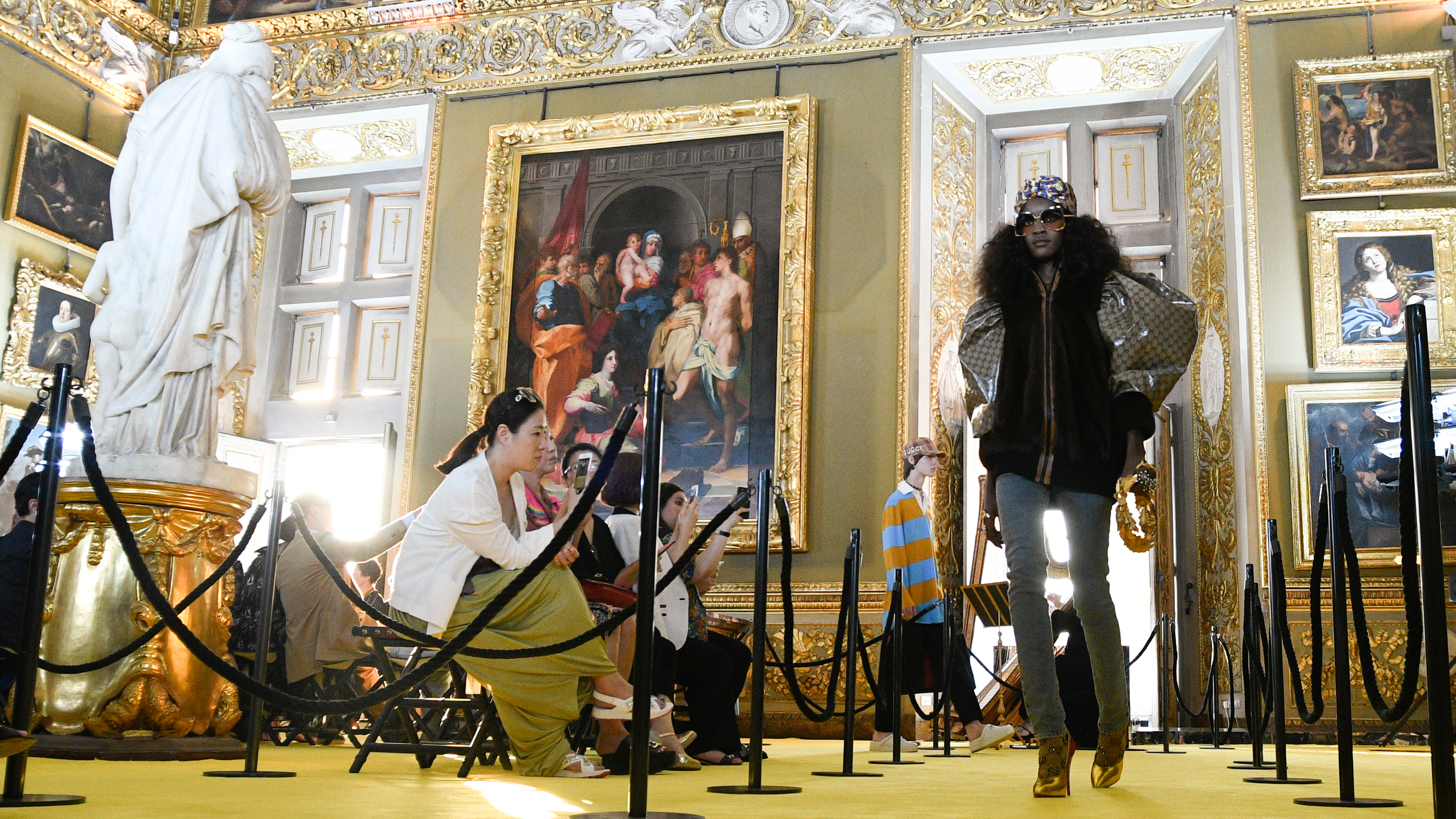
Though Day’s original shop on 125th Street closed in 1992, a string of events stretching back to the Gucci cruise show this past summer saw his groundbreaking and trend-setting work take a new position center stage. It started when Creative Director Alessandro Michele sent a logo-covered, puffed-sleeve jacket down his runway that was an obvious nod to a bespoke piece Day once made for Dixon over 20 years ago. After the show, Michele confirmed the source of inspiration, eventually going on to cast the always sharply dressed designer in his cruise tailoring campaign, announce an upcoming collaboration between them to be released later this year, and, as of this month, partner to open a Harlem Gucci atelier, “an homage to the couturier’s original shop, Dapper Dan’s Boutique,” the brand said in a press release.
While this new boutique feels like a true celebration and recognition of someone who’s been so influential to fashion—an industry so often critiqued for lacking diversity and tending to appropriate rather than appreciation—it also marks the opening of the first luxury retail studio in Harlem, opened by appointment and specializing in custom creations. It opens its doors both to the shopper who has lived in Harlem all along but needed to travel further downtown to make certain high-end purchases and to the shopper who will be drawn to the neighbourhood anew, perhaps for the first time. To get a sense of what that means for those who call Harlem home, we asked some of our readers, and among the locals (and one longtime Harlem resident), the consensus is that it’s complicated.
“Everyone paid homage to Dapper Dan, but no one ever paid him,” Day said in the release from Gucci. “The people have spoken and Gucci has listened. Nothing has been more significant in the Harlem cultural scene than Alessandro and Gucci coming to Harlem and partnering with Dapper Dan.” While our readers agree, welcoming this atelier doesn’t just mean better access. It means pride in a local artist. It's a reminder of the realities of gentrification. And it means excitement to see where the neighbourhood is going while preserving what’s made it so special all along. Here’s their take, in their own words.

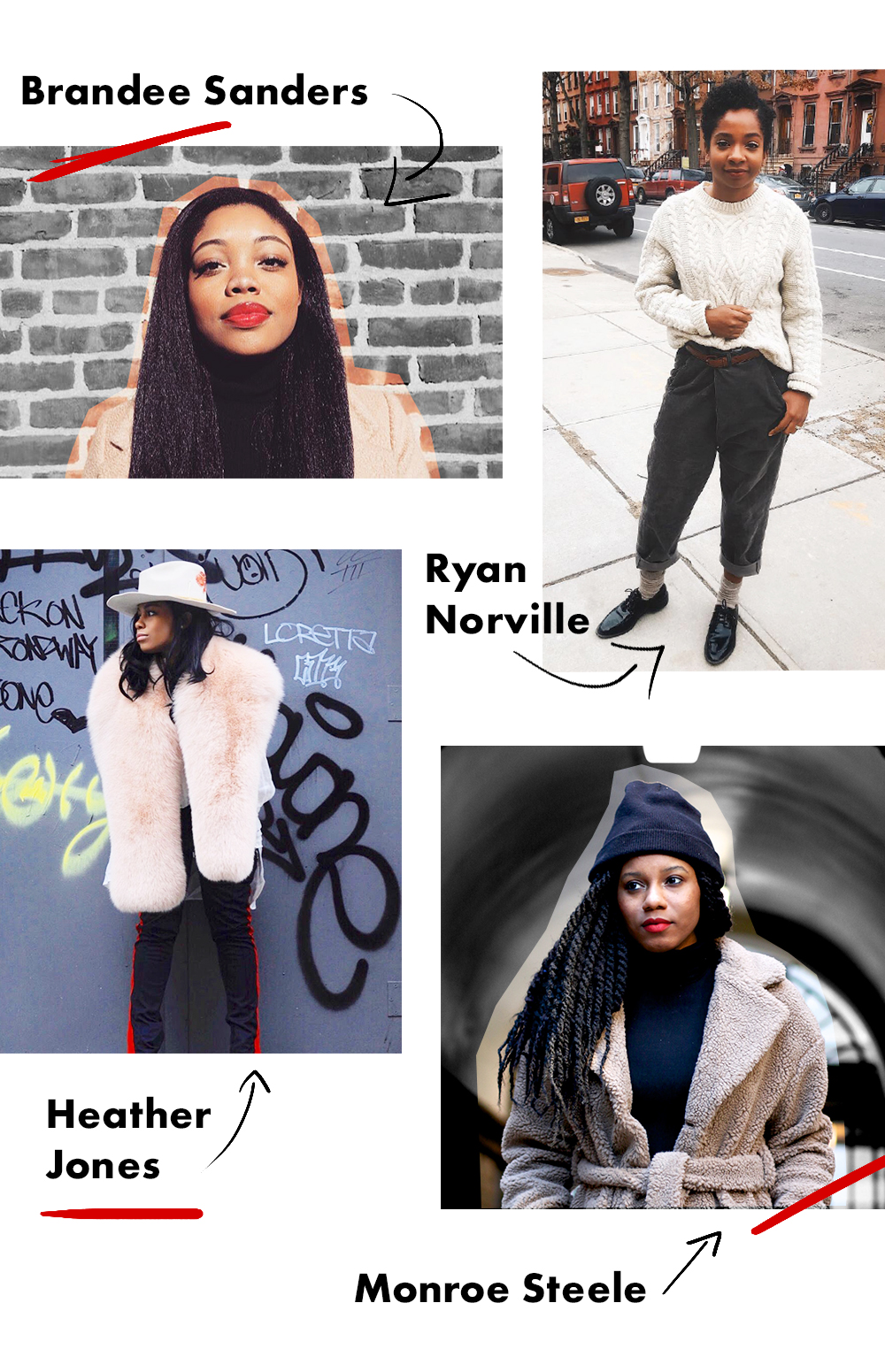
Brandee Sanders is a content marketing strategist at a Harlem nonprofit, born and raised in Harlem, and has lived there over 20 years.
Ryan Norville is a digital designer who moved to Harlem at 3 years old and has lived there 23 years.
Monroe Steele is a fashion and lifestyle writer who has lived in Harlem 10 years.
Heather Jones is the co-owner and founder of Trunk Show Designer Consignment and has lived in Harlem around 20 years.
In the time you’ve lived in Harlem, what has been one of the biggest changes in your neighborhood?
BS: As a millennial, I’ve witnessed Harlem’s physical and cultural landscapes go through a complete transformation. I understand that change is inevitable and it’s a crucial part of progression; however, I believe it becomes problematic when historic places like the Lenox Lounge—a popular jazz bar that opened in 1939 and was frequented by jazz legends like Billie Holiday and Miles Davis—are shuttered to make way for these changes. The scenery exemplifies a struggle between new and old. You can see this just by taking a stroll across 125th Street, where the historic, world-famous Apollo Theater stands in the midst of chain stores like Gap, Old Navy, and H&M, and the shuttered Lenox Lounge stand across the street from Whole Foods and Burlington Coat Factory. I think what has always made Harlem special is its strong sense of history and culture, and with the influx of these national retailers and chain stores, it waters it down a bit. When people go back to the neighbourhoods where they grew up, they want to feel a sense of nostalgia. Sometimes it’s hard for me to find that because there have been so many changes.
HJ: I think the most significant change here in Harlem would be the vast levels of gentrification. Harlem has always been a beautiful neighbourhood with such rich culture. However, I think over the past few years, more and more people have gotten wind of this. I mean, there was literally a time where people were petrified to take the subway past 96th Street; now going up to Harlem has become “a thing.” These days, there is a slew of luxury housing and eateries on almost every block. We even have a Whole Foods that recently opened up on the corner of 125th Street and Lenox Avenue. It’s pretty evident that Harlem is continuing to undergo some major modifications to attract the American middle class. I can’t say that I am unhappy with these changes; however, I hope that it does not lead to the complete erasure of the original Harlem I grew up in.
MS: I’ve lived in the same three-block radius for the 10 years I’ve lived in Harlem. The area I live in is called Sugar Hill Harlem because it sits on a huge hill at 145th Street. I’ve seen this area change a lot. Honestly, it used to be 99% black people. I would take the train from NYU campus to Harlem, and by the time I got off at my stop at 148th Street, it would be nothing but African Americans. What I’ve noticed it a lot of gentrification. Old buildings that have been lying empty for years are being renovated and flipped. A lot more non people of coluor live in Harlem now. The rents have also skyrocketed over the last five years. I’m lucky to live in a rent-stabilised building, but some aren’t so lucky. There are also a lot more businesses popping up, especially restaurants; 125th Street, which is basically the 5th Avenue of Harlem, looks completely different than it did even five years ago. I remember when American Apparel came to 125th, and Harlemites despised it. Now there’s an American Eagle and a Whole Foods. It definitely doesn’t have the same close-knit African-American vibe as much as it did when I first moved here.
RN: The biggest change has to be seeing the decline of family culture and the gentrification changing the dynamic of the neighbourhood. I grew up in the exact same apartment my whole life; everyone in my neighbourhood knew each other. From the deli owners to the after-school-program teachers. And now that the rent increases have forced families out of the neighbourhood, that energy has really changed.
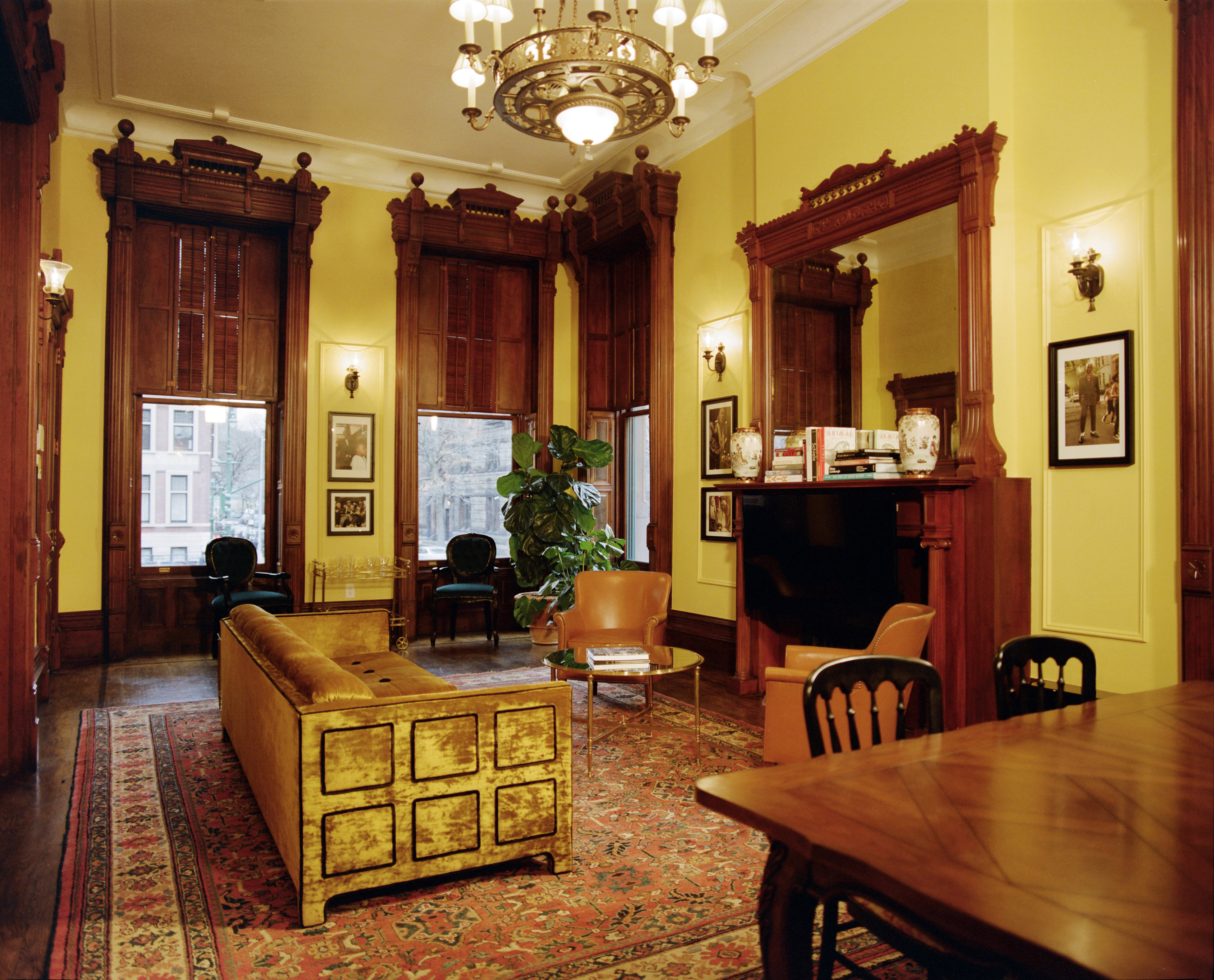
How has Harlem had an influence on your sense of personal style?
BS: Harlem has had a huge influence on my sense of style. People from Harlem use fashion as a form of expression, and their clothes often tell their stories. For me personally, my mood leads the direction for my outfit. If I want to feel comfy and cosy, I opt for a streetwear look with an oversize sweatshirt and some Stan Smiths. If I’m feeling extra bold and confident, I’ll rock an Ankara-print jumpsuit created by a local African designer. If there is anything that Harlem has taught me about fashion, it’s being bold, confident, and authentic in what you wear. Harlem has generated so many fashion trends, from the Harlem Renaissance era to present day where folks like the A$AP Mob are reinforcing how much of an influence that hip-hop has on fashion. Unbeknownst to many, a lot of designers pull their inspiration from the neighbourhood, and bits and pieces of the culture end up on the runway. We all witnessed this when Gucci debuted a jacket in Italy last year that resembled one of Dapper Dan’s creations.
HJ: Growing up in Harlem, you quickly learned that one of the easiest ways to become a part of the in-crowd was to be well dressed. This meant to be completely decked out in Wholesale Replica Bag and most expensive designer clothing you could get your hands on, even if it meant breaking the bank. Harlem style is all about flash and exuding panache; I don’t think there is anything simple about style uptown! I mean, have you seen the women on there way to church on Sundays? [Laughs.] It’s always been about who’s wearing the most dramatic fur coat, flashiest jewels, or luxurious designer clothing. This was just one the ways people in Harlem expressed themselves without speaking. I can definitely attribute Harlem’s influence to my personal style. This would have to be my decision to always go for pieces that are both practical and functional but still have that WOW element.
MS: Harlem is the home of the Harlem Renaissance. It was the place to be and a mecca for black culture, art, music, and style. I think Harlem still has a certain flair, and it’s best seen on a Sunday morning swarming in and out of the local churches. People still dress in Harlem, and it’s with grandiose personal style. There is no such thing as an understatement. Harlem is vibrant and colourful, and you can find a little of everything, from a canary yellow three-piece suit to a natural goddess swathed in crisp linens and an intricate head wrap. But Harlem style is never quiet. That’s one thing that distinguishes it from other boroughs.
RN: Growing up in Harlem, everything was about confidence and creativity. We’ll make something iconic and trendy with the smallest of resources. That has translated into fashion trends, music, dance, and all kinds of art. I can remember when I was a kid, a lot of the time, my family didn’t have the money for me to have Wholesale Replica Bag or trendiest clothes, so I got my creativity from that. I remember when I was in elementary school, it was like the height of Dipset. They even had a store on the block I lived where we would see Juelz Santana all the time. They had these signature paint-splattered jeans and T-shirts that were hundreds of dollars. And I remember my friends and me at 11 and 12 years old customizing our clothes and paint-splattering them so we could look like our favorite rappers.
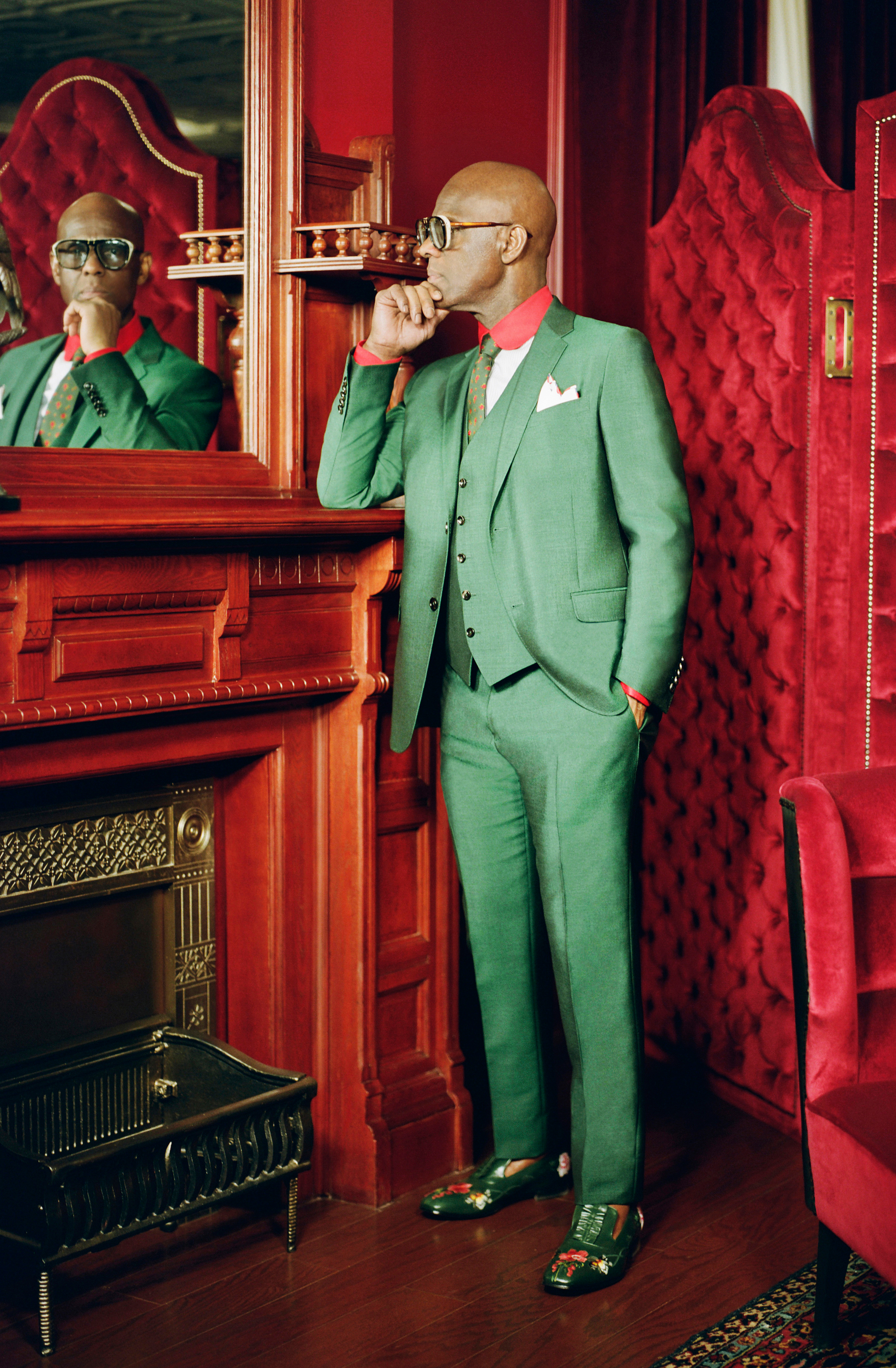
How familiar have you been with Dapper Dan’s history in fashion and in Harlem?
BS: If you’re from Harlem and you don’t know who Dapper Dan is, your neighbourhood card should be revoked. Dapper Dan is like Harlem royalty. Everyone knows about his legacy, influence, and impact in the community. My father, who was really big on fashion, schooled me about Dapper Dan at an early age and would tell me stories about how people would travel from near and far to his original boutique just to get custom pieces created by him. He didn’t only create clothes for big-name celebrities; many people in the local community used to go to his boutique to get custom pieces as well. His store closed when I was a toddler, so for a long time, I was only able to hear stories and see photos surrounding his legacy in fashion, but now I’m excited for the resurrection of his store and that he is a part of this new Harlem Renaissance. His story is built into the fabric of this community.
HJ: I didn’t exactly grow up in the Dapper Dan era; however, my parents did. My mom and dad would tell stories about Old Harlem and where they used to party, how they used to dress, and so on. It was always really exciting to me. My mom had me in the ’80s during the pinnacle of hip-hop culture and fashion. She would tell me how much of a big deal is was to own anything Gucci or Louis Vuitton back then, but more importantly, it was the exclusivity of the pieces that made you stand out. Some people who grew up in Harlem had the money to go in and purchase directly from these luxury boutiques, others didn’t, and then there were those who just wanted to be unique and conceptualize a garment that would be exclusive to them. I think that is what made Dapper Dan so special. He could bring any fashion idea to life, and people here in Harlem really appreciated that. He made luxury fashion accessible to those who felt it wasn’t.
MS: Yes. It’s a rite of passage as a Harlem resident to know about these things. Dapper Dan left a huge mark on the Harlem community. He was doing something completely new and different and people loved it. He was making clothing out of Louis Vuitton symbols when designers like that weren’t even making clothes.
RN: I wasn’t very familiar with it growing up. I really learned the story last year and researched him for myself.
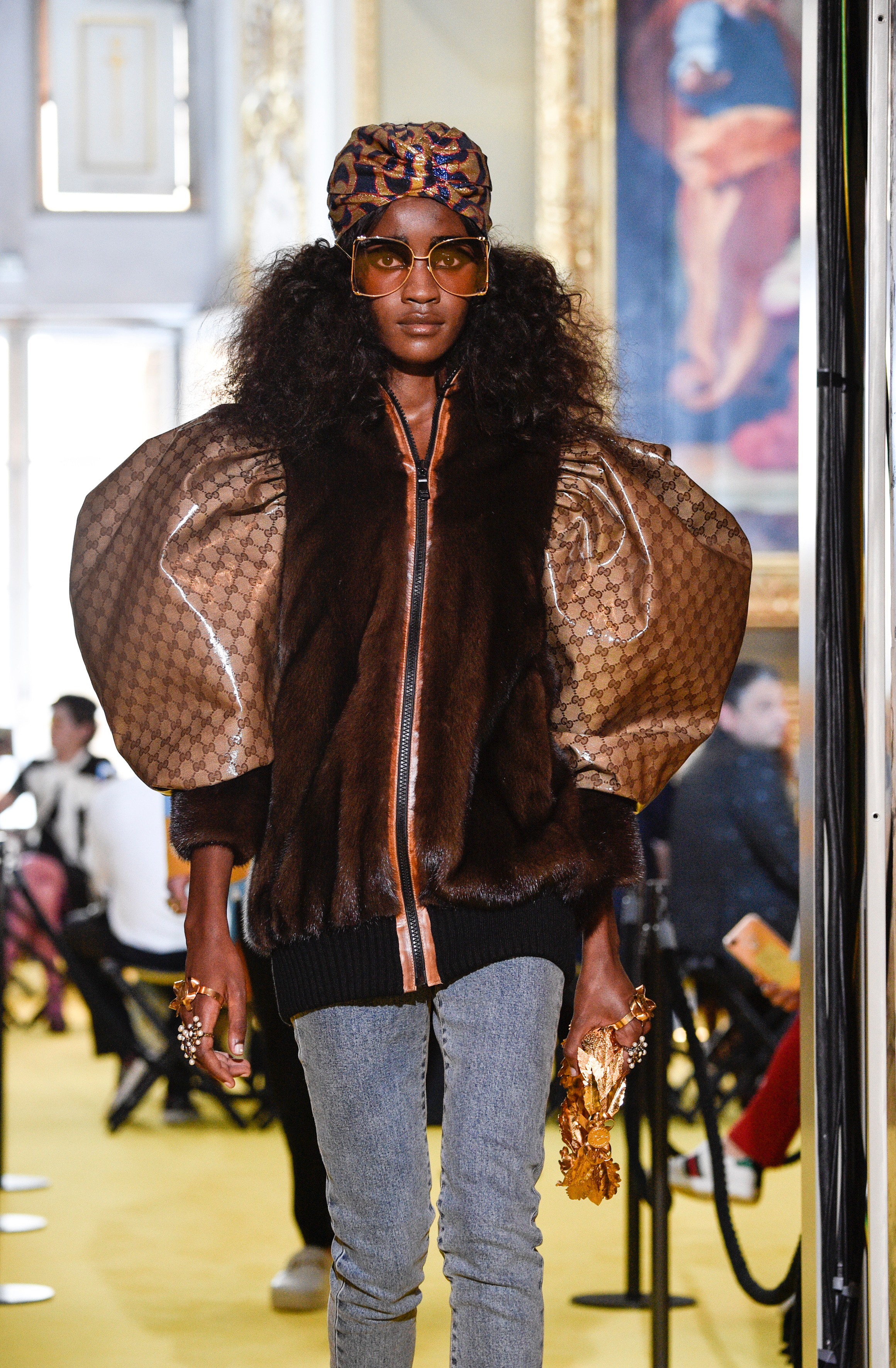
What are your thoughts on Gucci opening up an atelier in Harlem in partnership Dapper Dan?
BS: I’m really excited that Gucci is opening up an atelier in Harlem in partnership Dapper Dan. I think a lot of people from Harlem share the same sentiment. The huge Gucci x Dapper Dan billboard has been all over my Instagram timeline! This collaboration is Harlem history. If Gucci were to open up a store in the community without Dapper Dan being tied to it, I’m not sure I would be on board with it. The fact that they are collaborating with a Harlem designer who has deep roots in the community speaks volumes. Although there are several designers in the community who have long been purveyors of fashion, this collaboration is almost like a nod from the mainstream realm of fashion. It’s like the fashion world is finally acknowledging the fact that a lot of their inspiration is pulled from uptown.
HJ: I think this is an exciting time for both the Harlem fashion scene and Dapper Dan. With all the recent controversy surrounding cultural appropriation in the fashion industry, this couldn’t have been a more fitting remedy for the whole Gucci/Dapper Dan drama. I believe Dan simply needed the platform, materials, and resources to create freely, and this partnership enables him to do so. He is a super-talented man, and I’m really happy to see that is now being recognized on a grander scale. And we’d have to agree that this is all very becoming of Gucci, so I’m curious to see if any other high-end designers follow suit (in some way) over the next few years.
MS: I think it’s amazing. I remember the Gucci show that had a few designs that pretty much ripped off Dapper Dan. The internet went crazy. But we all knew the history, so we all knew where that “inspiration” came from. I’m happy that they decided to partner with Dapper Dan. I think it’s an awesome collaboration and will breathe some new life not only into Gucci but into Harlem. I am very excited about Dapper Dan opening up a new atelier in Harlem. I’m eager to see what he does.
RN: At first I had mixed feelings about the store opening because of everything my neighborhood has been through with gentrification. I wondered how a luxury store would help or harm that. But when I thought about it, and I became really proud of Harlem and for Dapper Dan getting the recognition his creativity he deserves. I think that’s the heart of Harlem—resilience and creativity that have survived generations—and I hope that this really helps that legacy live on and inspires other Harlem natives.
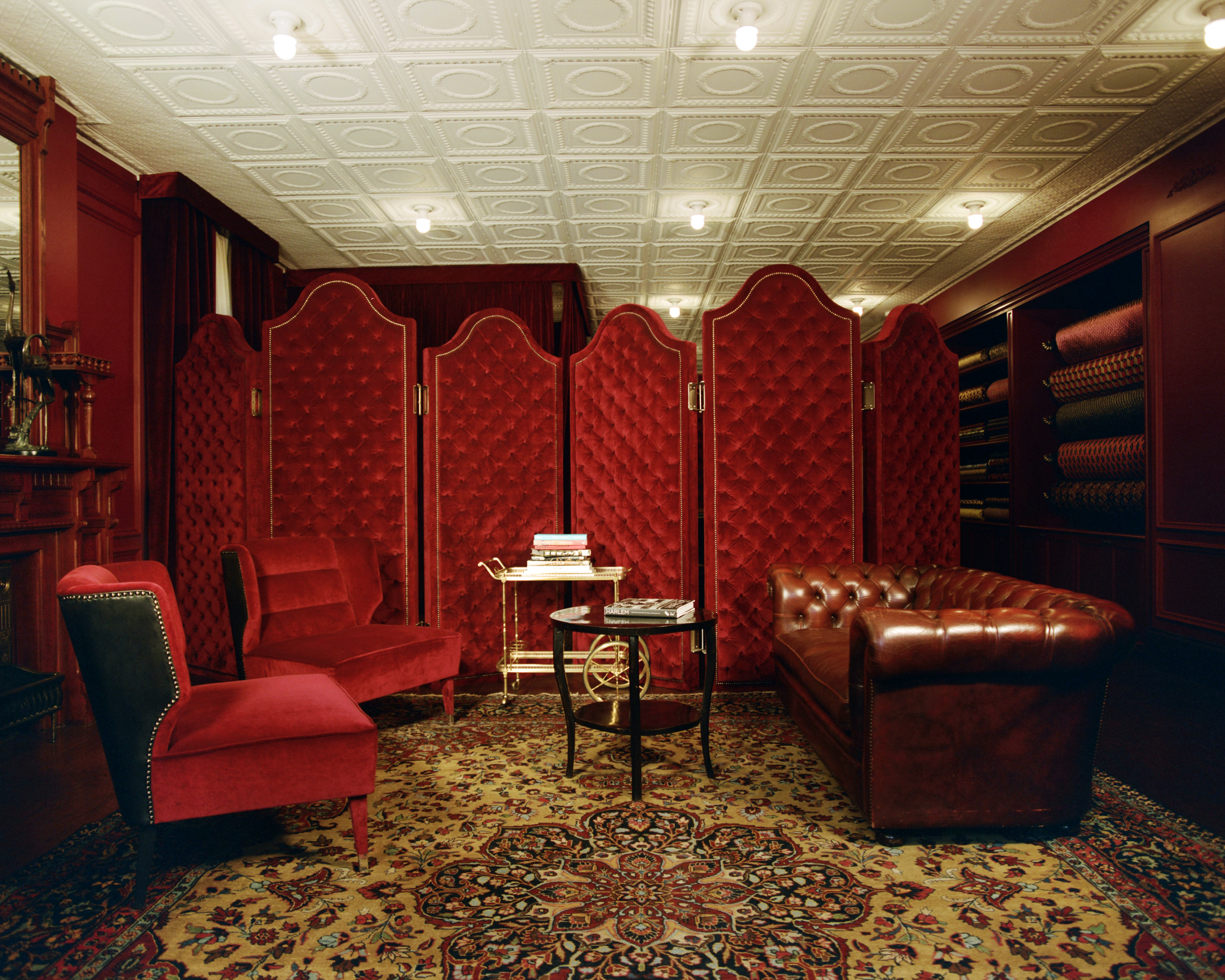
What do you think it means on a grander scale that Harlem is now home to its first major luxury brand?
BS: I respect the fact that Gucci is paying homage to the neighborhood’s culture and history through creating this space for Dapper Dan to continue his legacy. It’s a major win for Harlem. It’s a major win for African-American designers in the realm of fashion. Hopefully, this establishment illustrates how influential Harlem is in the fashion industry on a grander scale. While I’m excited for the addition of the new store, I really hope that the individuals who have been living in the local community feel welcome in the store and don’t feel ostracized. This is something that I’ve witnessed in the past when new establishments that have opened up in the neighbourhood. In the decades to come, I believe Harlem will continue to grow its influence in fashion. I also hope that the Dapper Dan x Gucci collaboration will inspire other luxury fashion brands to partner with designers of color. I’d like to see this collaboration replicated in other areas as well.
HJ: I think people who have lived in the neighbourhood for many years are still adjusting to all of these advancements. I’m sure some have mixed feelings to see older businesses go and more big-box retailers come to such a community-oriented neighbourhood. It feels like old cultures and fixtures are being stripped away. However, I am open to embracing these changes. In my opinion, Harlem is brimming with restaurants and bars, so it would be nice to see more fashion retailers open up over the next few years. I think there is still a void to be filled. However, I am happy to think that with this new Gucci atelier, more people will be receptive to the notion of shopping and selling luxury uptown. I am just really curious to see what’s ahead; I feel good about it.
MS: I think it was inevitable that it would happen. I’m just happy that it’s with someone who has roots and a history with Harlem like Dapper Dan. Honestly, Harlem isn’t the same as it was a mere five years ago; in 10 to 20 years, it won’t be recognisable. The neighbourhood will inevitably become more and more whitewashed. Currently, the African-American population is being pushed farther north, and the Dominican population in Washington Heights is being pushed into the Bronx. This land, just a 20-minute train ride from the city center, with its large prewar apartments and charming parks, is being pruned for the wealthy. I wish it weren’t that way, but that’s certainly the direction it seems to be going. Harlem is being bought up and sold to the highest bidders. Hopefully, some staples will stand the test of time.
RN: On a grander scale, my hope is that it benefits the culture and roots of Harlem, that it influences and empowers youth in Harlem to see their neighbourhood recognised by this luxury giant, and for them to realise their dreams and creativity has no bounds. Also, I hope it influences other large luxury brands that pull inspiration from small local artists to collaborate with them instead of stealing their ideas. In terms of the future of Harlem, I could see it being a destination for artists, both visual and performing artists, and hopefully people will become more educated on the neighbourhood’s historical value, the same way people fawn over the neighbouring boroughs. My hope is for Harlem to have the respect it deserves as a cultural epicenter as most new “New Yorkers” I’ve met know very little about Harlem even though it’s affected a lot of popular culture, in my opinion. I have a lot of pride for my hometown! Ultimately, I want to see its legendary status grow globally without displacing the longtime residents and families or disrupting the culture that’s always made it feel like home.
The Gucci atelier in Harlem is open by appointment only.
This post originally appeared onBest Knockoff Luxury Clothing U.S.
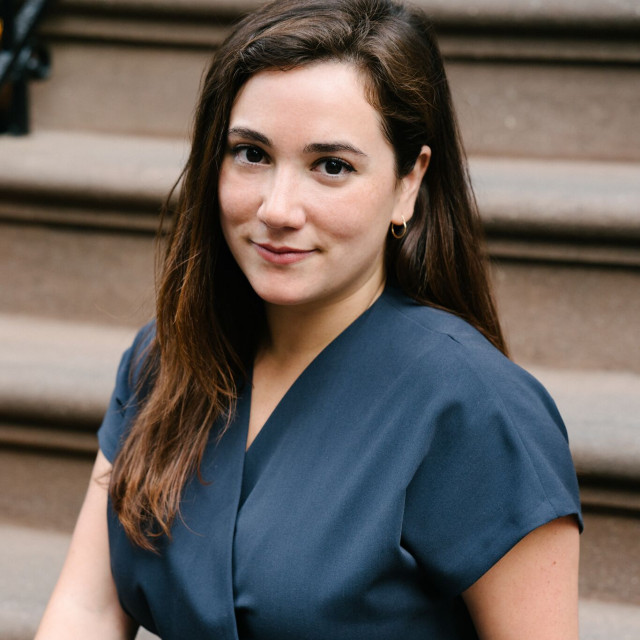
Who's your style icon?
Taylor Tomasi Hill
Who are your 5 favorite people to follow on Twitter/Instagram?
@tamumcpherson @lisasaysgah @therealgracecoddington @everyoutfitonsatc @notmynonni
What's the fashion essential you can’t live without?
A leather jacket.
What's your desert island album?
Beyoncé "B'Day." Or pretty much anything Beyoncé.